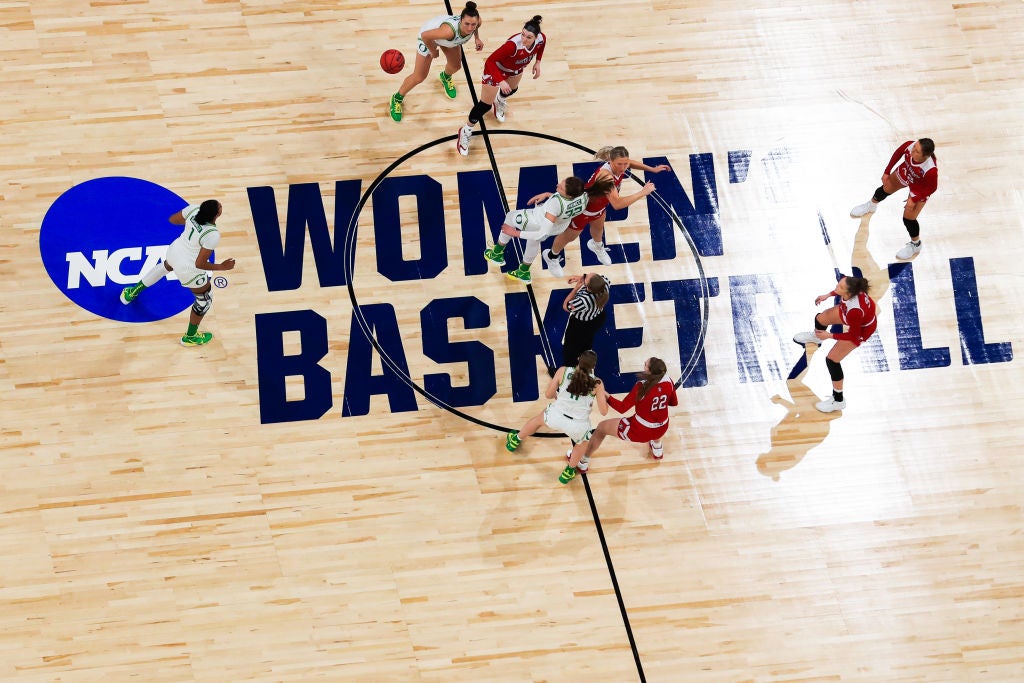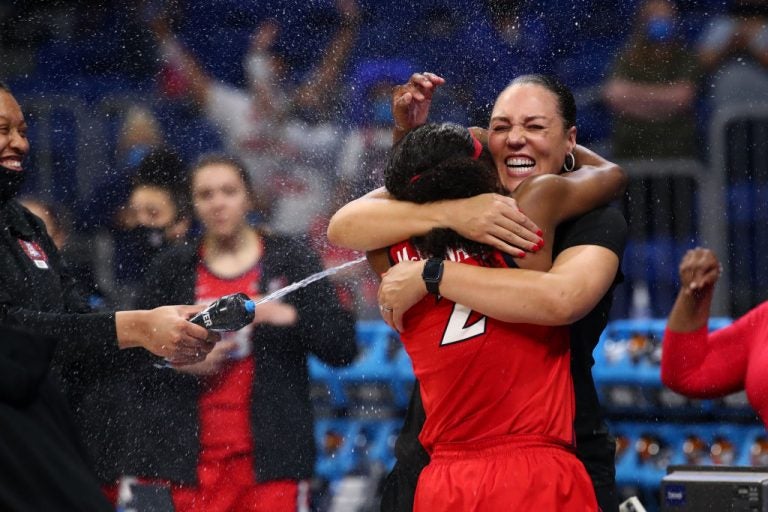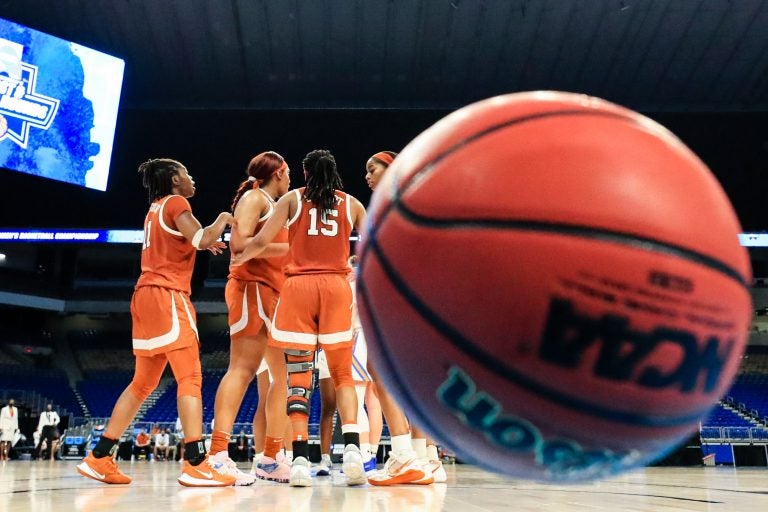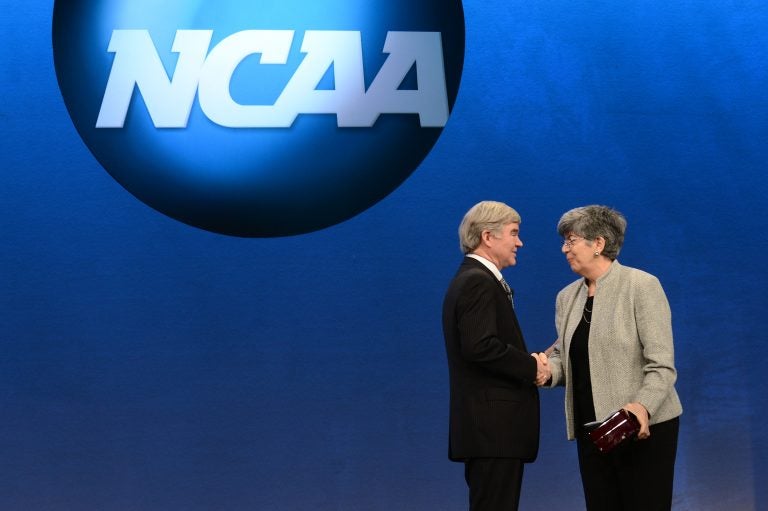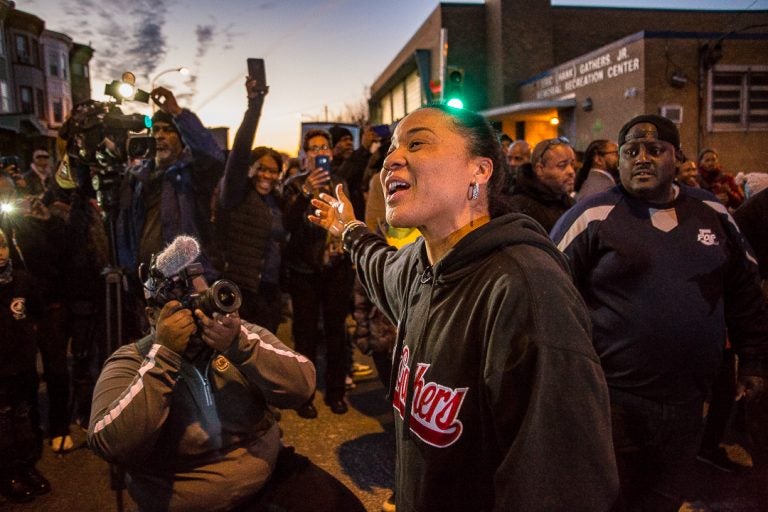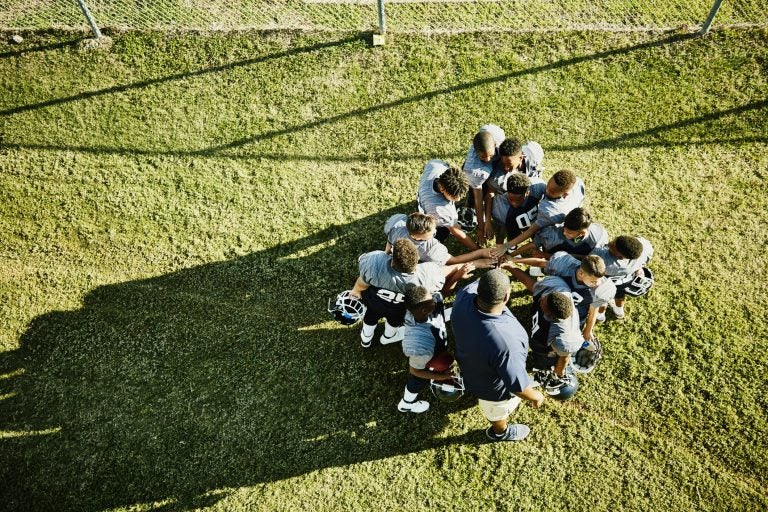A New Case for Diversity in College Sports
Why this matters
College sports are largely run by White men. Bringing more women and people of color to the senior decision-making table could strengthen the enterprise both morally and financially – and also help prevent a repeat of the embarrassing public mistakes that characterized the recent NCAA women’s basketball tournament.
A paltry dumbbell rack instead of a legitimate weight room. An inexplicable prohibition on the use of the March Madness logo. As the disparity in resources between the men’s and women’s National Collegiate Athletic Association basketball tournaments exploded across social media and a series of news articles last month, the ensuing criticism and controversy called the NCAA’s commitment to equality into question—and also highlighted the larger struggle for diversity in college sports and among senior NCAA leadership.
None of the schools in the women’s Final Four had a woman serving as athletic director. Only one of those schools’ athletic directors, Stanford University’s Bernard Muir, is a person of color. The NCAA’s senior vice president of basketball is Dan Gavitt, a White man who also serves on the men’s basketball committee and men’s basketball oversight committee but is not part of any women’s basketball committees.
Zoom out, and the picture remains the same: In university president and athletic director offices alike, White men overwhelmingly occupy the seats of power within the industry, even as the athletes they serve are becoming increasingly diverse.
While having more women and people of color in leadership roles would not necessarily have prevented the NCAA from making a series of widely panned and seemingly inequitable decisions before and during the women’s tournament – did female athletes really need to receive inferior swag bags? – having more diverse leadership likely would have helped. And, broadly speaking, the benefits of executive diversity for businesses and organizations are well-established.
College sports’ ongoing failure to bring a wider variety of voices to the decision-making table is arguably hurting the enterprise – from both financial and moral perspectives.
Built for a 'dominant perspective'
From the NCAA’s staff to the individual athletic departments of its member schools, equitable hiring and management strategies in college sports are in their relative infancy. Meanwhile, college sports have a long history of excluding women and people of color.
“These organizational structures were built over time in ways that did not consider diverse viewpoints, that did not consider viewpoints outside of the dominant perspective of mostly white men,” says Dr. Anthony Weems, an assistant professor at Western Carolina University who is studying sport ethics.
“That is really the organizational structure that we’re running into, that this was designed in a particular way,” Weems said. “Part of the problem is redesigning and reinventing the organization while somehow keeping the organization.”
Reinvention has been slow – and sometimes stagnant. According to the The Institute for Diversity and Ethics in Sport (TIDES) at the University of Central Florida, 72.3 percent of Division I athletic directors are White men; 86.7 percent of Division I conference commissioners are White; and 76.3 percent of administrators at the NCAA’s headquarters are also White.
By contrast, 10.3 percent of Division I athletic directors and 23.5 percent of NCAA senior leaders are Black, while 14.3 percent of Division I athletic directors and 49.6 percent of NCAA senior leaders are women.
A recent study conducted by the Global Sport Institute at Arizona State University examining athletic director changes across 248 Division I schools from 2010 to 2019 found minimal diversity gains, with the overall percentage of Black athletic directors rising from 17 percent to 19 percent and women from 8 percent to 12 percent.
“Organizations have reluctantly embraced diversity as an organizational practice and as a quote-unquote resource,” says Weems. “That was, by and large, to avoid legal ramifications. People weren’t sure how it would affect profit and revenue generation and things like that, but we have to be intentional in moving past that.
'But how involved are those people?'
In corporate America, the business case for diversity, equity, and inclusion is well-developed. Studies have found that racial and gender diversity are positively associated with more customers and increased revenues; that investment in diversity directly translates into better financial performance; and that companies with more women in the C-suites are more profitable.
Likewise, Boston Consulting Group study found that companies with more diverse management teams have 19 percent higher revenues due to greater innovation. And McKinsey has found that companies in the top quartile of ethnic diversity on their executive teams are 36 percent more profitable than those in the lowest – leading the management consulting firm to declare that “the penalties are getting steeper for those lacking diversity.”
Sociologists have found that inadequate diversity in college sports or other large organizations also can lead to “a culture of similarity” in which leaders are rigid, generally avoid risk, and make one-sided decisions.
“There are ways in which businesses, including sports teams, can find ways to make it so that, in appealing to a broader array of people, it enables them to engage and include and therefore make more money,” says Linda Akutagawa, the chair of the Alliance for Board Diversity, which advocates for diversity in the corporate and nonprofit sectors.
At the women’s basketball tournament in San Antonio, Texas, the NCAA arguably paid a price for its lack of diverse leadership. While the association’s leaders publicly apologized for gender inequities, publicly admitted that they had made mistakes, and hired a law firm to conduct an independent review, they also seemed caught off-guard by widespread outcry – and sometimes were at a loss to explain how the organization failed meet the “Principle of Gender Equity” standard laid out in its own constitution.
For instance, NCAA president Mark Emmert’s response to questions about not allowing the women’s tournament to use the March Madness logo only added to existing confusion when he said, “if the women’s committee and the women’s community wants it used, there’s no reason” that it couldn’t be used, even though Emmert’s own organization reportedly decided otherwise.
According to The Wall Street Journal, only nine women serve on the 24-member NCAA Board of Governors that acts as Emmert’s boss. When it comes to women’s basketball, Lynn Holzman serves as the association’s vice president of the sport, while Nina King chairs the committee that planned the women’s tournament. Both women report to Gavitt.
As the Big East’s senior associate commissioner for women’s basketball and chief diversity, equity, and inclusion officer, Tracy Ellis-Ward tackles diversity in college sports from the conference level. She says that even when organizations and schools diversify by hiring more women and people of color, not much changes unless those individuals also have management power.
“It’s one thing to have a varied mix of people working in an organization,” she says. “But how involved are those people in decision-making and feedback?”
'More than an organizational resource'
The murder of George Floyd last summer and the revitalized social justice movements that have followed have strengthened the moral case for leadership diversity in college sports and beyond.
“We’re talking about the human experience, about human rights, and hopefully that is seeping into our day-to-day business practices and what we do,” says Dr. Akilah Carter-Francique, the executive director of the Institute for the Study of Sport, Society, and Social Change at San Jose State University.
Many American institutions, including a number of NCAA member schools and conferences, have pledged to be more inclusive. The association’s Inclusion Statement says that “diversity and inclusion improve the learning environment for all student-athletes and enhance excellence within the Association.”
However, ethereal pledges to do better and concrete policies aimed at greater diversity in college sports leadership are two different things. Last year, the West Coast Conference took a step in the latter direction by adopting a “Russell Rule” requiring more inclusive and equitable hiring practices for head coaches and athletic directors.
Whether other conferences will follow suit remains to be seen. Pressure to do so may come from an previously unlikely source: NCAA athletes themselves, who increasingly have been speaking out and showing unprecedented solidarity with each other on issues ranging from abusive coaching and health and safety concerns to racial insensitivity and restrictive amateurism rules that limit their economic rights and ability to profit from their names, images, and likenesses.
College sports leaders who look and think more like the people they represent may be better equipped to communicate, empathize, and ultimately find solutions to these challenges – not to mention put together an adequate weight room at the women’s basketball tournament without being publicly shamed.
"Diversity is more than an organizational resource,” Weems says. “It can be tough for top administrators to see beyond that, but this is fundamentally about how we relate to one another as people. In a context where intercollegiate athletics is experiencing dramatic changes, if we can root out oppressive structures and practices, then we will be better positioned to build a sustainable future together."
Monthly Issue
The Administration of Change
Higher education is an environment ripe for discovery, new knowledge, and innovation. However, the role of Athletic Director at university levels still reflect the commonly seen disparities between representation of race, gender, experience, and perhaps most ironically - education level.
Beyond Black and White, what are the underlying factors for the still murky ‘pipeline’ to administrative leadership in U.S. college sport?

